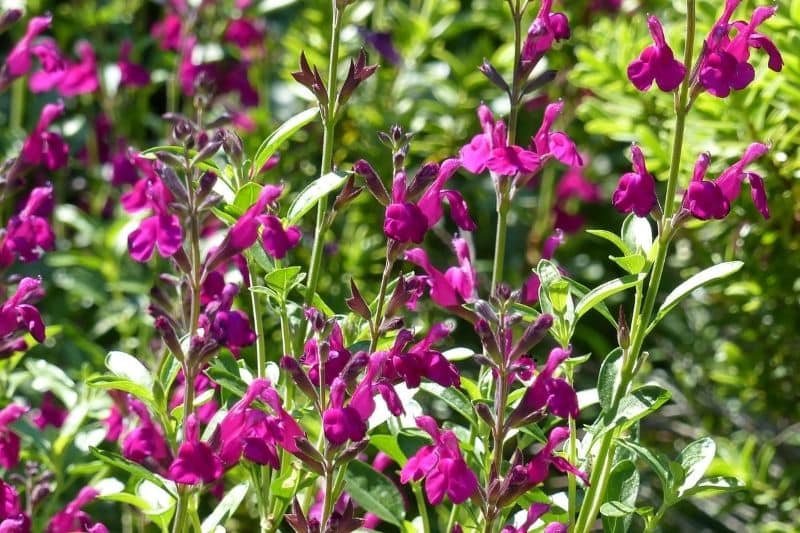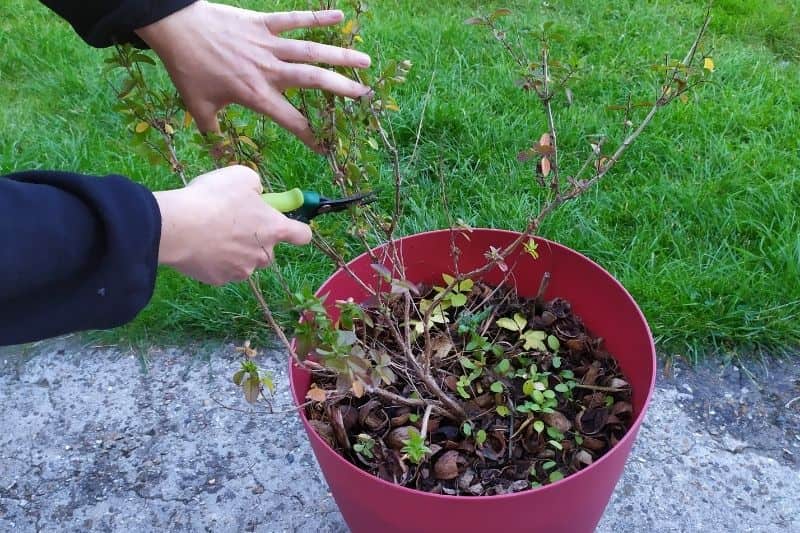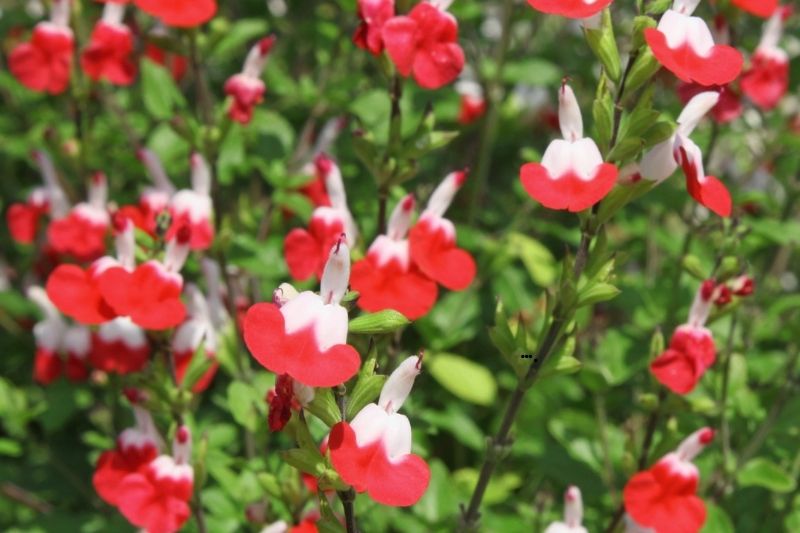Bushy sages are charming perennials, highly prized for long flowering, from spring to autumn. Flowers in spikes come in colourful shades — red, mauve, blue, pink, salmon, white or bicolour depending on variety. Its woody stems and bushy habit give it appearance of small bush. Easy to grow, requires little maintenance, apart from annual pruning.
Discover when and how to prune bushy sage easily, thanks to our illustrated tutorial!

Salvia jamensis 'Raspberry Royal' is a pretty bushy sage with raspberry-red flowers, slightly violet-tinged
When to prune bushy sage?
Pruning of sage is done at end of winter and in very early spring, between late March and the end of April, even early May in regions with late frosts.
Warning: for many plants, pruning is often carried out before growth resumes, either in autumn or in winter, but this is not the case for bushy sage! On the contrary! Wait until sage shows signs of vegetative restart before pruning. In short: wait until it starts to produce young shoots in spring before cutting branches. If you cut sage during autumn or winter while in dormancy, this will force it out of dormancy. It may then begin a sap rise far too early in the season, which will weaken it or even prove fatal.
How to prune bushy sage?
What equipment do you need?
Stems of bushy sages are woody and fairly tough to cut. Equip yourself with a pruning shear, taking care to disinfect it before use to avoid transmitting diseases from one plant to another.
To help sage restart, provide an application of compost. Plants in tubs or pots will need, in addition to this, a fertiliser for flowering plants.
Why prune sage?
By pruning bushy sage, you encourage production of lower buds, which will produce vigorous shoots. This also cleans up the clump by removing dead wood and unsightly branches that unbalance its silhouette. Your sage will appear bushier during summer and adopt an attractive bushy shape. Without pruning, lower parts will become bare, revealing woody branches and resulting in a chaotic habit.
Pruning the sage
1) Between late March and late April, observe your bushy sage regularly. Wait to see a few small leaves appear before pruning, so as not to damage plant with a premature cut.
2) Using a disinfected pruning shear, cut back all branches by half, or even by two‑thirds. Although this cut may seem drastic, it encourages bud formation on lower parts of stems. Your sage will quickly restart and produce new shoots.

Cut stems back by half, or even by two‑thirds.
3) Enrich soil:
- In ground, add well‑rotted compost at base of sage to aid recovery. Scratch soil with a hand rake to incorporate this addition more easily.
- For sages in pots or tubs, also add compost or a complete fertiliser immediately after pruning to enrich substrate and help restart. In May and June, also apply a fertiliser for flowering plants to boost flower production.
4) During flowering period, regularly remove faded flowers to encourage sage to produce new flowering spikes.
To go further:
- Find all our varieties of bushy sage.
- For full details, discover our complete fact sheet on sages, Salvia: planting, pruning and maintenance.

































Comments